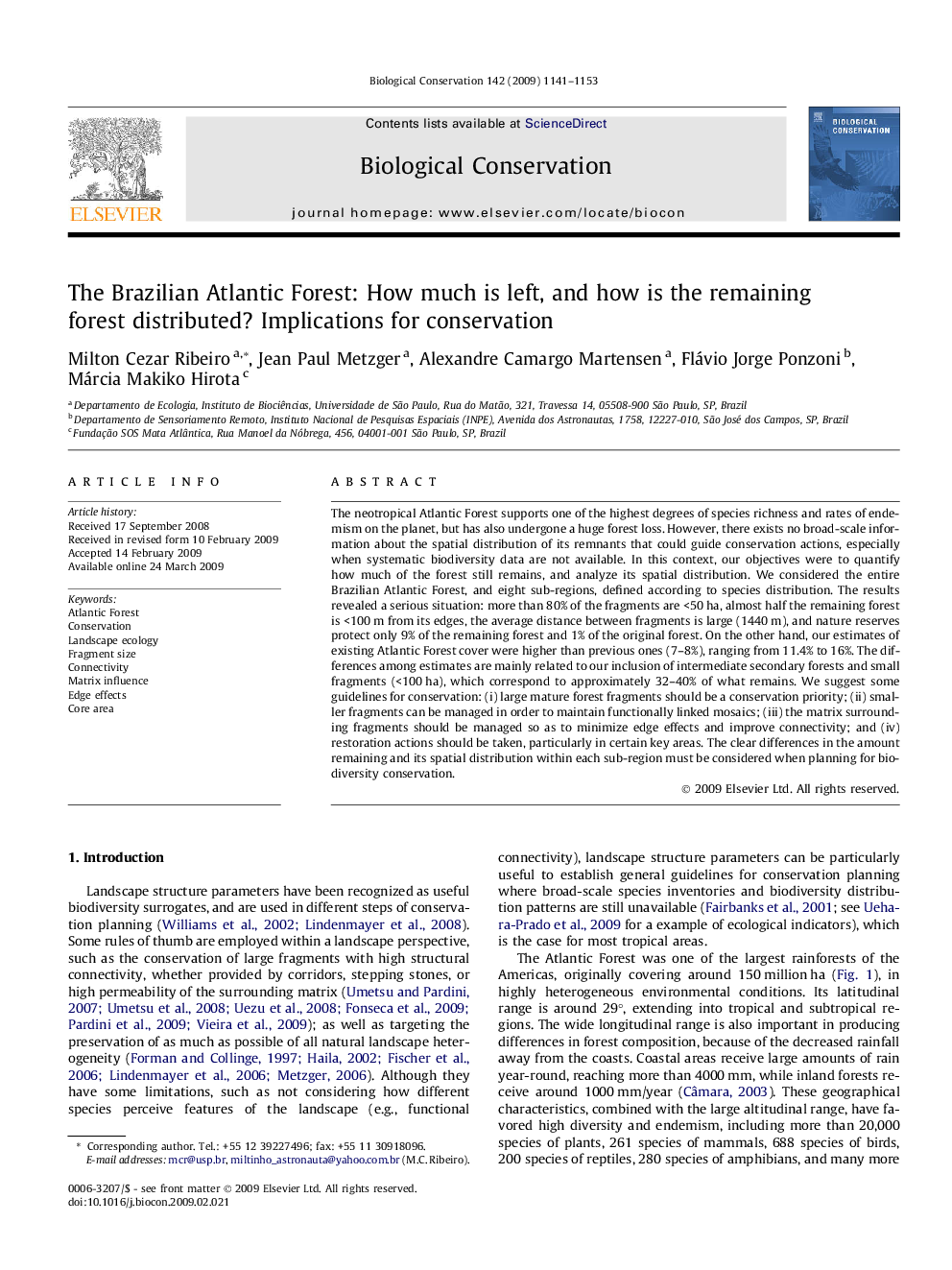| Article ID | Journal | Published Year | Pages | File Type |
|---|---|---|---|---|
| 4386086 | Biological Conservation | 2009 | 13 Pages |
The neotropical Atlantic Forest supports one of the highest degrees of species richness and rates of endemism on the planet, but has also undergone a huge forest loss. However, there exists no broad-scale information about the spatial distribution of its remnants that could guide conservation actions, especially when systematic biodiversity data are not available. In this context, our objectives were to quantify how much of the forest still remains, and analyze its spatial distribution. We considered the entire Brazilian Atlantic Forest, and eight sub-regions, defined according to species distribution. The results revealed a serious situation: more than 80% of the fragments are <50 ha, almost half the remaining forest is <100 m from its edges, the average distance between fragments is large (1440 m), and nature reserves protect only 9% of the remaining forest and 1% of the original forest. On the other hand, our estimates of existing Atlantic Forest cover were higher than previous ones (7–8%), ranging from 11.4% to 16%. The differences among estimates are mainly related to our inclusion of intermediate secondary forests and small fragments (<100 ha), which correspond to approximately 32–40% of what remains. We suggest some guidelines for conservation: (i) large mature forest fragments should be a conservation priority; (ii) smaller fragments can be managed in order to maintain functionally linked mosaics; (iii) the matrix surrounding fragments should be managed so as to minimize edge effects and improve connectivity; and (iv) restoration actions should be taken, particularly in certain key areas. The clear differences in the amount remaining and its spatial distribution within each sub-region must be considered when planning for biodiversity conservation.
